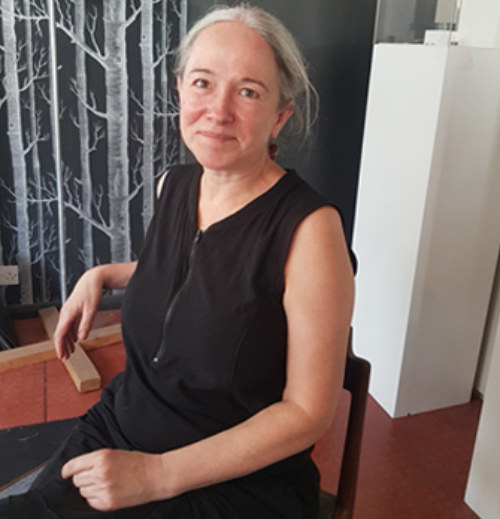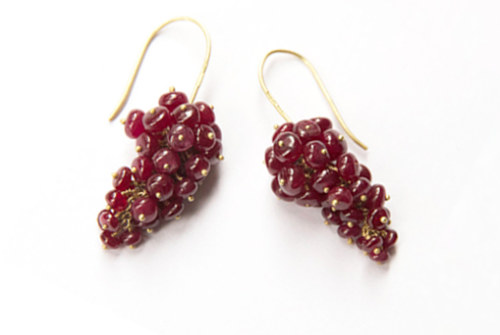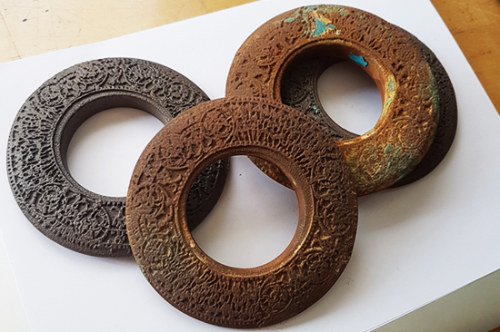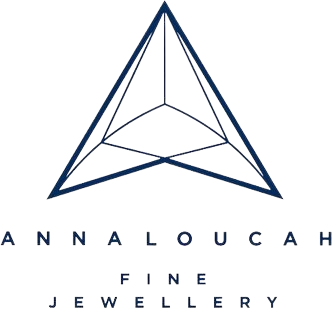We interviewed Sian Evans, former senior lecturer at Central Saint Martins and award winning jewellery designer and founder of ‘Sian Evans Jewellery’. Her interest in ancient jewellery techniques is apparent in many of her collections, and we discovered more about her passion for archaeology, anthropology, and the ‘possibility for the bottom of your jewellery box’. Read the interview below:
Q: Do you have a favourite piece of jewellery?
A: Not a favourite single piece, but I have a love for old, archaeological pieces of jewellery that come from the Bronze Age. The huge amount of skill and the dexterity that our ancient jewellery ancestors possessed is awe-inspiring!
“A combination of old and new processes I’ve collected over the years has created for me a kind of augmented toolkit”

Q: What is it that fascinates you about the history of jewellery most?
A: We as humans have developed a certain sense of self, and with that, a sense of belonging.
For example, being part of a family or tribe gives you a sense of unity and archaeologists believe that when particular tribes started to dress in different ways this grew into a sense of identity.
Neanderthals have been found with body adornments – Archaeologists have found pieces of body adornment 70,000+ years old – I find that extraordinary!
Q: Do you think the reasons for wearing jewellery have changed over time?
A: Historically, the reasons why humans wear jewellery have not changed one iota!
There has always been a leader in a tribe and often, they are determined by wearing something different. It could be a different set of feathers or shells but it will be something that only the leader is allowed to wear which signifies that they are in charge – and that’s jewellery.

Q: Do you think the situation affects why and how people wear jewellery?
A: Yes of course – if I’m going to a party I can really show off how fashionable and attractive I am but if I’m going to a business meeting I want to look serious and successful.
For example, a successful piece of jewellery will depend on who you are, and what time you’re from. For me, what I would call ‘successful’ earrings are those that display exquisite workmanship and materials – so my ‘successful’ earrings are handmade from gold and rubies.
“Historically, the reasons why humans wear jewellery have not changed one iota!”
Q: Do you think there is a subjective element to the perception of value when it comes to jewellery?
A: The anthropology of wearing jewellery and fashion has always fascinated me. You wear a piece of jewellery as part of a package, and once it’s on your body it can’t be separated from anything else.
Your dress code informs who’s looking at you and a piece of jewellery on a body is completely different when it’s sat in a shop.
Even the designer who made it won’t have the same understanding of that jewellery as the person who ends up wearing it – there’s a very different interpretation involved.
Q: Do you think there’s a particular type of woman who wears your jewellery?
A: Different types of people come to me to buy different types of jewellery. The fashion jewellery that I make is very flamboyant, so the people that wear that are very much ready to party, whereas my precious jewellery is often quite low-key, so those clients could be considered quite design conscious.
Q: Are there different processes involved in making each of the different collections?
A: I’m also an archaeologist, so I’m extremely interested in very old processes – many of which have found their way into my work. These may have developed from me holding old pieces and trying to work out how they’ve been made or reading certain books, and testing out ideas.
A combination of the old and new processes I’ve collected over the years have created for me a kind of augmented toolkit but it is mostly the old processes that really inform what my precious jewellery looks like.
“In your western culture now, men are still adorned, but they do it differently, with a fast car, an expensive watch, or a handmade loafer.”
Q: Is the recycling of old pieces, and the continuation of those jewellery stories, important in your work?
A: I do pop ups and little exhibitions where I talk about my processes, show my work and tell the audience about the possibility for the bottom of their jewellery box. The audience see my pieces and realise they also have similar items that could be transformed whilst retaining their meaning.
Q: Jewellery obviously has a very sentimental value to some, would you describe yourself as sentimental?
A: No, I would say I’m extremely pragmatic, so probably the opposite of sentimental.
When people want to recycle a family piece that they have engaged with, there is something about the aura for them that they want to keep intact. By me making it into a piece that they love, they still see their family member when it’s on their finger, but that’s not me, that’s the meaning they’ve attached to it – I’m just a part in their story.
Q: Are there historical and cultural differences in the reasons why men and women wear jewellery?
A: Gender roles have definitely shifted a lot. In early adornment, it may have been for both men and women but I think with the advent of religion, roles became more defined.
Sometimes the women were more important but sometimes the men were and it would swap over. For example in Kenya, during certain rituals, the women give the young men their jewellery to wear during rights of passage.
In your western culture now, men are still adorned, but they do it differently, with a fast car, an expensive watch, or a handmade loafer.
“My jewellery has a narrative”
Q: So do you think there are different forms of self-expression through adornment?
A: Yes, women spend their money on gold, whereas men spend their gold on Ferraris. When gold was first found it didn’t have any value, people just discovered they could work it into different shapes without many tools.
It was only with the idea of money that gold was assigned a value. You can cut gold into bits of make it into a standard size which could be traded for two bags of rice for example. Accounts used to be kept on clay tablets, but as they increased with complexity it became harder to keep track and so we developed a system that we now call money.
Q: Do you think ethical jewellery is on the rise?
A: As a very young woman I made some decisions about what I was going to do, to not harm the planet that I’m on if I could possibly help it.
When I first became interested in jewellery I started collecting stories about it. I learnt about where metals came from and about how devastating mining was.
Back then, I couldn’t source traceable precious materials but there has been a recent increase in awareness through popular culture around things such as conflict diamonds and mining conditions.
To me, this means that most of my precious and bespoke collections have had almost no impact on the environment at all.

Q: Did you always know you wanted to be a jeweller?
A: I wanted to be an artist as a teenager and I was going to solve all of the world’s problems through art! Archaeology and history have always been part of my thought process in making jewellery – my jewellery has a narrative. It doesn’t follow the rules, is uncompromising, and definitely made with love.
